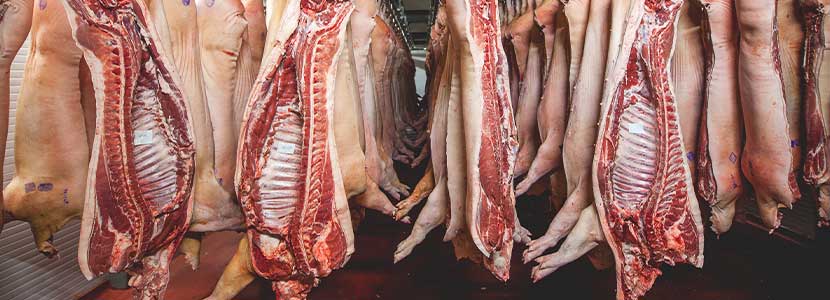 06 Sep 2024
06 Sep 2024
Resilience of the U.S. Pork Packing Industry: The Role of Labor and External Disruptions
In a recent study by Padilla et al. (2023), researchers investigated how labor shortages, disasters, and population trends impacted the U.S. pork packing sector during the COVID-19 pandemic. Using a comprehensive panel dataset of 40 major hog slaughter plants, the study explored factors influencing reductions in production and plant shutdowns, offering new insights into the industry’s vulnerabilities.
The research revealed that larger pork processing plants were more likely to reduce their daily slaughter volumes compared to smaller facilities. An increase in physical plant capacity was found to correlate with greater reductions in daily processing, but notably, there was no significant link between plant size and the likelihood of a complete shutdown. This indicates that larger plants opted for strategic reductions in production rather than full closures in response to disruptions.
A key takeaway from the study is the critical role of labor availability in determining plant operations. Factors such as the number of COVID-19 cases, the location of plants in population-loss areas, and the occurrence of severe weather events all had a significant impact on the ability of plants to maintain production levels. This finding highlights that labor shortages, rather than just plant size, played a major role in limiting production during the pandemic.
The study also underscores the impact of external shocks, such as severe weather and the rural locations of many plants, which often struggle with labor supply. These environmental and local factors worsened the disruptions caused by the pandemic and could pose ongoing challenges for the industry in the face of future shocks.
The results suggest that increasing plant capacity alone is not enough to strengthen the resilience of the pork packing sector. The study calls for a broader focus on improving labor availability in rural areas, along with strategies to mitigate the impact of external disruptions such as severe weather. Addressing these challenges could help ensure the sector’s long-term sustainability and ability to withstand future crises.
Source: Padilla, S. L., MacLachlan, M. J., Vaiknoras, K., & Schulz, L. L. (2023). “Disasters, population trends, and their impact on the U.S. pork packing sector.” Food Policy, 118, 102458. https://doi.org/10.1016/j.foodpol.2023.102458
Subscribe now to the technical magazine of animal nutrition
AUTHORS

Nutritional Interventions to Improve Fertility in Male Broiler Breeders
Edgar Oviedo
The Use of Organic Acids in Poultry: A Natural Path to Health and Productivity
M. Naeem
Synergistic Benefits of Prebiotics and Probiotics in Poultry, Swine, and Cattle
Gustavo Adolfo Quintana-Ospina
Hybrid Rye Potential in Laying Hen Feed Rations
Gwendolyn Jones
A day in the life of phosphorus in pigs: Part I
Rafael Duran Giménez-Rico
Use of enzymes in diets for ruminants
Braulio de la Calle Campos
Minerals and Hoof Health in the Pregnant Sow
Juan Gabriel Espino
Impact of Oxidized Fats on Swine Reproduction and Offspring
Maria Alejandra Perez Alvarado